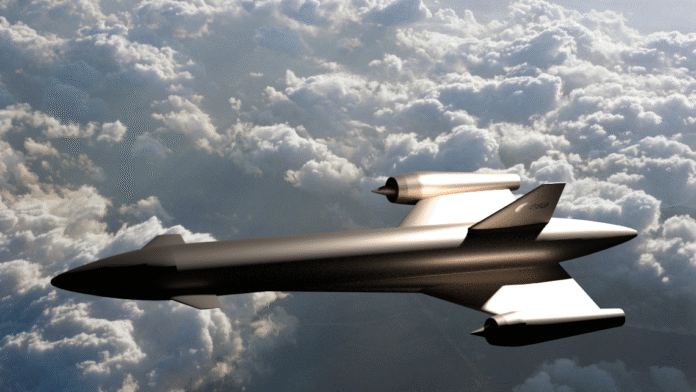Contents
Europe Embarks on Ambitious Hypersonic Space Plane Project, Aims for 2031 Maiden Flight
The European Space Agency (ESA) has initiated a research program called Invictus, led by the consulting firm Frazer-Nash, to develop a hypersonic space plane pathfinder. With a funding of 7 million pounds (approximately $9.4 million US), the project aims to create a reusable vehicle that can take off from and land on a runway like an airplane, revolutionizing both terrestrial and orbital transportation. The Invictus team, comprising Spirit AeroSystems, Cranfield University, and other partners, is expected to deliver the “concept and elements of preliminary design of the full flight system” within 12 months, with the maiden flight scheduled for early 2031.
The European Space Agency (ESA) is taking a significant step forward in the development of hypersonic space planes, with the launch of the Invictus program. This initiative, led by Frazer-Nash, aims to create a reusable vehicle that can travel at hypersonic speeds, exceeding five times the speed of sound. The project is expected to have a profound impact on European spaceflight, enabling the creation of aircraft that can take off like planes and reach orbit like rockets. According to Tommaso Ghidini, head of the Mechanical Department at the ESA, “Hypersonic flight is not just the next frontier of aerospace — it is the gateway to a new paradigm of mobility, defense, and space access.”
Key Technologies and Innovations
The Invictus program will leverage technology developed by Reaction Engines Ltd., including the pre-cooler, a crucial component of the Synergetic Air-Breathing Rocket Engine (SABRE). The pre-cooler is designed to cool the air before it reaches the engine, allowing conventional aircraft engines to operate at hypersonic speeds. This innovation addresses the significant challenge posed by hypersonic flight, where temperatures can rise to extremely high levels due to shock heating and friction from the air. As Frazer-Nash representatives explained, “Aircraft that fly at hypersonic speeds face extremely high temperatures due to shock heating and the friction from the air. Typical aircraft engines cannot operate in these conditions, as the air is too hot to handle.”
Project Timeline and Objectives
The Invictus team is expected to deliver the concept and elements of preliminary design of the full flight system within 12 months. The project timeline is ambitious, with the maiden flight scheduled for early 2031. The team will work closely with the ESA and other partners to ensure the successful development of the hypersonic space plane. As Tony Forsythe, head of space technology at the U.K. Space Agency, noted, “We look forward to seeing how the work develops and the opportunity it presents for boosting economic growth and national security.”
Some key highlights of the Invictus program include:
* Development of a reusable hypersonic space plane
* Utilization of the pre-cooler technology to enable hypersonic flight
* Collaboration between the ESA, Frazer-Nash, and other partners
* Ambitious project timeline, with the maiden flight scheduled for early 2031
* Potential applications in terrestrial and orbital transportation, as well as defense and space access
Global Space Plane Developments
The Invictus program is not the only initiative focused on developing space planes. Other companies and organizations, such as Virgin Galactic, Sierra Nevada Corp., Dawn Aerospace, and Radian Aerospace, are also working on similar projects. The French government and Dassault Aviation have announced plans for a demonstrator called VORTEX, while the U.S. military operates a robotic orbital space plane called the X-37B. China has also developed a similar vehicle, called Shenlong.
Future Perspectives and Implications
The development of hypersonic space planes has the potential to revolutionize the aerospace industry, enabling faster and more efficient travel, as well as access to space. As Tommaso Ghidini noted, “By mastering reusable, air-breathing propulsion, we are laying the foundation for aircraft that take off like planes and reach orbit like rockets — revolutionizing both terrestrial and orbital transportation.” The Invictus program is an significant step forward in this direction, and its success could have far-reaching implications for the future of space exploration and development.
In conclusion, the European Space Agency’s Invictus program is an ambitious initiative that aims to develop a hypersonic space plane pathfinder. With its innovative pre-cooler technology and collaborative approach, the project has the potential to revolutionize the aerospace industry and enable faster and more efficient travel, as well as access to space. As the project progresses, it will be essential to monitor its developments and assess its implications for the future of space exploration and development.
Keywords: European Space Agency, Invictus program, hypersonic space plane, pre-cooler technology, reusable vehicle, terrestrial and orbital transportation, defense and space access, Virgin Galactic, Sierra Nevada Corp., Dawn Aerospace, Radian Aerospace, X-37B, Shenlong, VORTEX.
Hashtags: #HypersonicSpacePlane #EuropeanSpaceAgency #InvictusProgram #SpaceExploration #AerospaceIndustry #ReusableVehicle #TerrestrialAndOrbitalTransportation #DefenseAndSpaceAccess #VirginGalactic #SierraNevadaCorp #DawnAerospace #RadianAerospace #X37B #Shenlong #VORTEX
Source link
